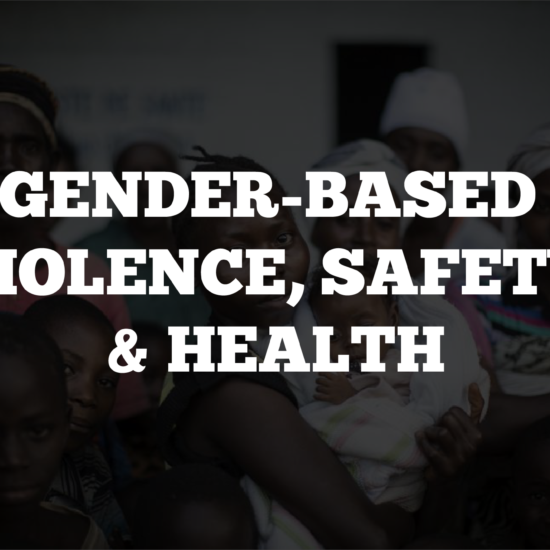TOWARDS GENDER EQUALITY / Economic gap
Economic Gap
Economic Gap

© Barefoot college
In 2021, The World Economic Forum (WEF) announced that closing the gender gap had just been pushed back another whole generation. The most recent Global Gender Gap Report notes that women will have to wait 135.6 years to achieve global gender parity – an increase of 36 years from the 2020 figure of 99.5 years.
WEF now estimates that it will take an enormous 267.6 years to close the economic gender gap due to continuing income disparities, and low representation of women in leadership and managerial positions.
According to The Washington Post, the first twelve months of the pandemic “knocked 54 million women around the world out of work” and of the women who lost jobs in 2020 “almost 90 percent exited the labour force completely compared with around 70 percent of men.” The Post analysed national data sets and told the stories of individual women from three case study countries – Peru, Thailand and France.
Covid-19 job losses have hit women harder than men, not least because they are employed in high numbers in sectors most immediately affected by lockdowns – such as hospitality and retail – and were also affected by additional caring responsibilities at home. Facebook Chief Operating Officer Sheryl Sandberg, among others, have described this burden as working a “double shift.”
In a keynote speech marking International Women’s Day on March 8th 2021, International Monetary Fund (IMF) Chief Economist, Gita Gopinath, laid out a series of measures to increase the economic equality of women around the world. These included boosting tax advantages for part time work, higher government spending on childcare, increasing flexible work provision, and the removal of legal, institutional or regulatory impediments that are keeping women from participating fully in the workplace.
UN Women set out 5 steps that governments and businesses could take to mitigate the economic effect of the pandemic on women. These include: direct income support to women; support for women-owned and -led businesses; support for women workers; support for informal workers; and the reconciliation of paid and unpaid work.
Check out the following links for more data on the economic gap
- The World Economic Forum’s (WEF) Global Gender Gap Report 2021
- Gender Equality, women’s rights in review 25 years after Beijing – UN Women – Generation Equality
- Global Wage Report 2020-21: Wages and minimum wages in the time of COVID-19, International Labour Organization
- The UN’s Progress on the Sustainable Development Goals, the gender snapshot 2021
- The OECD Gender Data Portal
EXAMPLES OF IMPACTFUL INITIATIVES AT THE NATIONAL LEVEL
#Investing in childcare at the national level
- Germany made nursery places for children under age 3 a legal right in 2013. This was accompanied by a massive expansion of subsidized child care places. By 2017, 37 per cent of under-3s were enrolled, with a positive knock-on effect for mothers’ paid employment.
- Chile has expanded free public childcare services and extended their opening hours to fit in with the schedules of working parents. By 2017, 32 per cent of under-3s had a childcare place. Crucially, the gap in access between children in the richest and poorest families had also narrowed.
- In Kenya, a pilot programme in an informal settlement in Nairobi found that women provided with subsidized childcare vouchers over a 12-month period were 17.3 per cent more likely to be employed than those who did not receive a voucher.
#Fixing the housework gender gap
In Sweden, a country that ranks top in the EU’s Gender Equality Index, cutting down on domestic chores was made possible by a tax reduction policy through which the state pays half of every housework bill, such as cleaning, laundry and ironing. While the tax break remains controversial in many ways, research from academics at Stockholm University in 2014 concluded that married women working full-time who hired cleaners devoted an average 60% of the hours they saved to their own paid employment, and argued that expanding domestic services could help minimise Sweden’s gender pay gap.
#Introducing quotas for female management
The Norwegian experience shows that compulsory quotas for female board members —first introduced in the country in 2004 with a 40% female quota— can be effective in improving the gender balance. However, the OECD warns the overall economic consequences of mandatory quotas have yet to become clear and suggests a range of tools can be used to work towards the goal of gender balance – target setting, compliance with corporate governance codes and, in all cases, the monitoring and publication of progress.
EXAMPLES OF IMPACTFUL INITIATIVES AT THE GRASSROOTS/CIVIL SOCIETY LEVEL
#Investing in education & training
In Rajasthan, the Barefoot College near Jaipur is teaching rural women — many of them illiterate — how to fabricate solar panels, lights and photovoltaic circuits, training them to become ‘Solar Mamas’. Once ‘graduated’ from the engineering six-month training programme, these women can return to their hometowns, and provide renewable electricity to their communities all while earning a decent living, gaining financial independence. Women from all over the world can apply for a grant. The initiative has already trained more than 2,200 Solar Mamas from 93 different countries. You can read more here.
#Introducing pay transparency
In 2019, research from PayScale showed that the gender wage gap closes completely with increased pay transparency — in the companies studied, the gender wage gap was nonexistent for women who agreed that their organization’s pay practices were transparent. These women earn between $1.00 and $1.01 for every $1.00 that a man makes, across all age groups and job levels. The research also found that the gender wage gap closed completely for 73% of industries and organizations that apply transparency policies — while those that didn’t close still narrowed. The report’s theory is that open conversations about wages lead companies to fix salaries fairly using market data and to put a price on the job, instead of the person, which helps to eliminate unconscious gender-bias.

CONCRETE INITIATIVES, COVERED IN THE NEWS THROUGH CONSTRUCTIVE LENSES:

Tackling paternity leave stereotypes in Japan
By Kenjiro Takahashi, Natsumi Nakai, Suguru Takizawa, Sawa Okabayashi and Yoshinobu Matsunaga, Asahi Shimbun (Japan)
Did you know that in Japan, after the birth of a baby, both parents can take up to one year of paid leave at the same time? The Japanese archipelago has one of the most generous paternity leave systems in the world.Yet less than 8% of the working fathers in the country took advantage of it in 2019 —compared to 83% of working mothers- because of ingrained workplace and gender stereotypes. Some public authorities and private companies are however trying to shift mentalities by taking a top-down approach.

Kenyan women are crushing stone and stereotypes at the same time
By Tom Matoke, The Daily Nation (Kenya)
For the last 12 years, women from the Chepkemel community’s Women’s Self-Help Group have been filling two needs with one deed: stone crushing On the one hand, stone crushing has provided them with the money needed to put their children through college and sometimes even universities, while taking care of the younger ones at home. On the other hand, it has enabled them to smash the gender role stereotype that laborious jobs only belong to men. In the last ten decades, Women’s Self-Help groups in Kenya have been leading grassroots self-improvement initiatives, particularly in rural areas. Such leadership is seen as crucial in improving the country’s 95th rank out of 156th countries studied on the Gender gap by the World Economic Forum in 2021.
Info
All, Gender Related Issues









